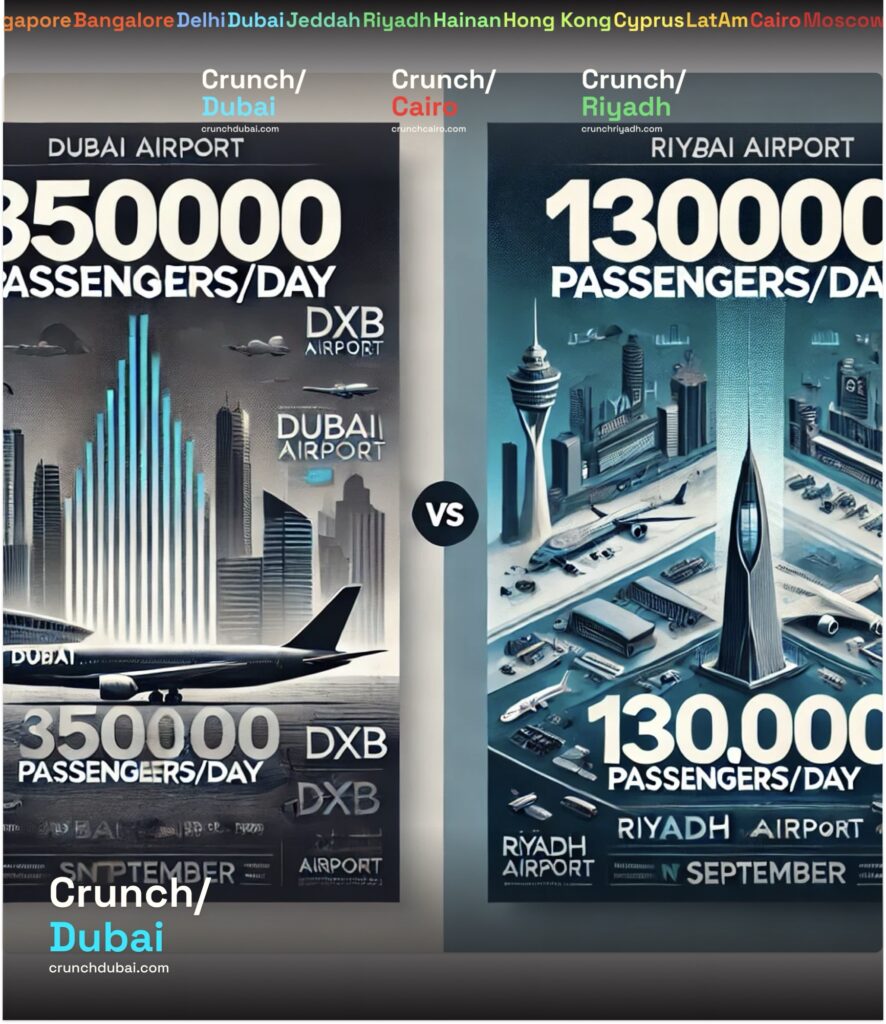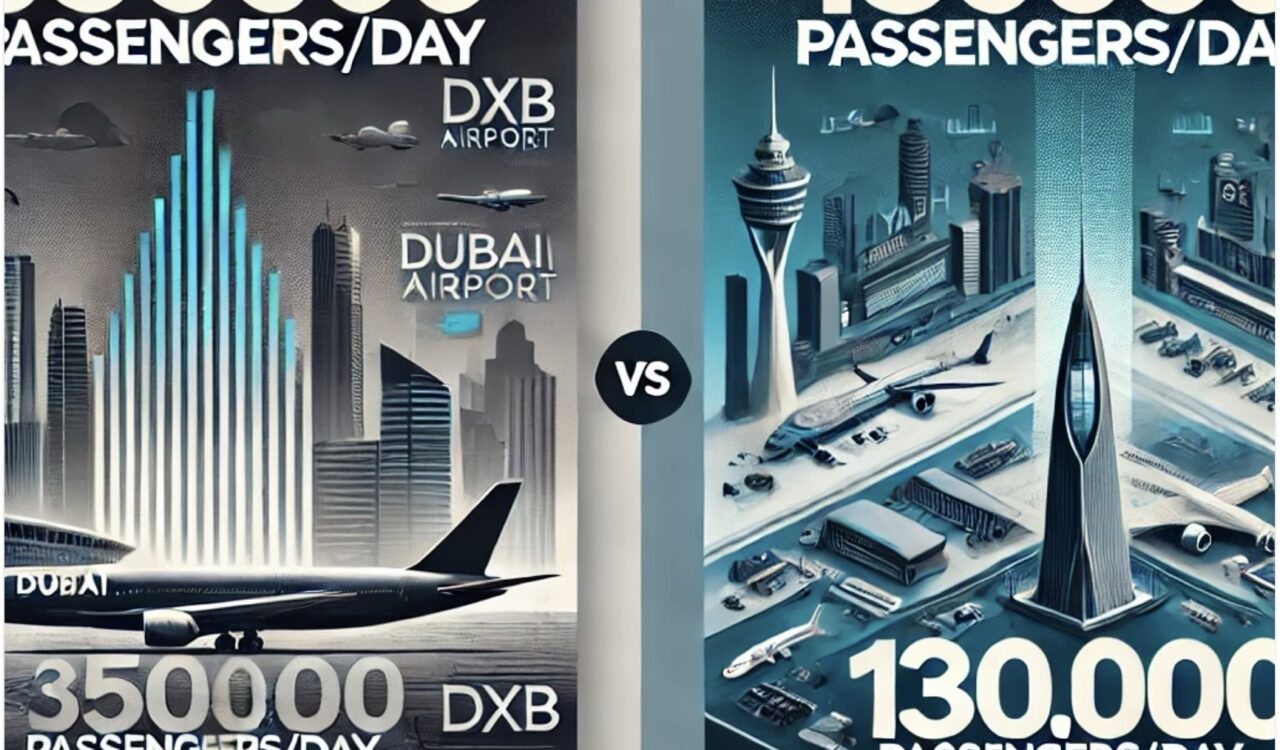DXB VS KKIA People and Statistics: Dubai International Airport (DXB) (CrunchDubai.com/register and write your Dubai Airport Story) and Riyadh’s King Khalid International Airport (KKIA) (CrunchRiyadh.com/register and write your Riyadh Airport Story) are smashing records and setting new standards in global aviation.

With Dubai Airports’ CEO Paul Griffiths (we write about his donation in NGOs of Dubai) steering the ship, DXB is on track to handle an astonishing 91 million passengers in 2024, having already clocked 44.9 million in just the first half of the year. Meanwhile, under the leadership of

KKIA CEO Ayman Abu Ababa, CEO of KKIA, Riyadh’s airport has made headlines by shattering its own records—peaking at 3.5 million passengers in July 2024 and an unprecedented 130,000 passengers in a single day on August 1. These titans of travel are not just moving people; they’re redefining what’s possible in the world of air travel. Who will come out on top? The numbers are in, and the race is closer than ever.

As these airports compete for the crown of the Middle East’s busiest hub, businesses and travelers alike are discovering new opportunities. Don’t miss out—register now on CrunchDubai.com and to stay ahead of the curve and make your mark in these dynamic markets.
Deep Dive into the DXB & KKIA Numbers
Dubai International Airport (DXB):
The numbers at Dubai International Airport are nothing short of impressive. In the first six months of 2024, DXB welcomed 44.9 million passengers, an 8% increase from the previous year, indicating a strong recovery and robust growth in air travel demand. This pace puts the airport on track to achieve its ambitious projection of 91 million passengers for the year. On peak travel days, DXB has seen daily passenger volumes soar past 264,000, showcasing its ability to handle immense traffic, particularly during high-demand periods.
King Khalid International Airport (KKIA):
Riyadh’s KKIA is also making waves with its own record-breaking numbers. In July 2024, the airport managed an impressive 3.5 million passengers, up by 400,000 from its previous best. This surge in traffic was crowned by a single-day peak of 130,000 passengers on August 1, 2024, demonstrating the airport’s growing capacity and efficiency. With a seat occupancy rate of 91% in July, KKIA is maximizing its resources, reflecting high operational efficiency and strong demand.
Comparative Analysis: When comparing these figures, it’s clear that both airports are experiencing exceptional growth, albeit on different scales. DXB’s daily averages are consistently high, reflective of its status as a major global hub, while KKIA’s record peaks highlight its rising prominence in the region. The competition between these two airports is not just about numbers but also about who can capitalize on the peak business season to drive further economic growth.
